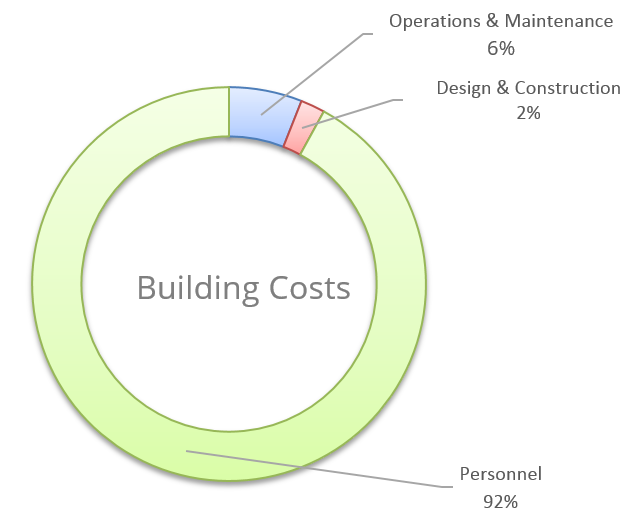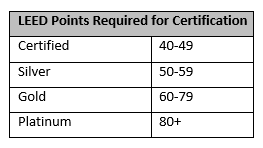A Compliment to LEED: WELL – A New Building Standard Focused On Health & Wellness
-Written by John Cribbs
What is the WELL Building Standard?
According to Delos, founder of the WELL Building Standard (or simply WELL), the standard is “the world’s first building standard focused exclusively on human health and wellness.” WELL is intended to bridge the gap between evidence-based medical research and best practices in design and construction. The standard focuses on improving the built environment, specifically buildings, where humans spend over 90% of their time. Ultimately, WELL is a framework which enables teams to analyze the impacts of design and construction on the health and wellness of occupants.
What are the benefits of the WELL Building Standard?
There’s no question that the United States is currently in the midst of a public health crisis related to obesity and diabetes. These conditions are further exacerbated by the rise in asthma cases around the nation. Much of this pandemic stems from increasingly sedentary lifestyles and the prevalence and easy access to poor quality, processed foods. Many of these issues can be tackled through the lens of integrated design and planning. The built environment has a direct impact on human health and wellness and subsequently shapes daily routines and lifestyles. Armed with this knowledge, it is imperative that teams understand the impact their design may have on inhabitants in order to positively influence user lifestyles.
The WELL Building Standard shapes this discussion by focusing solely on human health and well-being as it relates to the built environment. The ultimate goal of WELL is to introduce a preventative approach to healthcare through proactive design which encourages daily movement, proper nourishment, access to healthy indoor air quality and engagement with the natural environment. This is a lofty goal and one that directly responds to the negative health trends facing today’s population. WELL has the ability to add meaningful value to real estate assets by generating cost savings through enhanced worker and user experience. This has been proven to increase worker productivity metrics and generate repeat business opportunities.
What is the business case for WELL?
The “3-30-300 “rule becomes the main point of emphasis for businesses when discussing the WELL Building Standard. This rule simply implies that organizations typically spend around $3/SF/year for utilities, $30 for rent and $300 for payroll. This showcases that the greatest financial savings an organization may see from properly designing a workplace may come in the form of productivity. To put this in perspective, a 5% energy improvement would result in savings around $0.15/SF, whereas a 5% improvement in worker productivity would result in savings near $15/SF through increased performance and wellbeing. This has been quantified and verified in a report from Jones Lang LaSalle, Perspectives on Workplace Sustainability, where they note that some studies have shown productivity gains of 20%+ by engaging in sustainable design and workplace practices. Ultimately, the creation of a sustainable and high-performance facility improves an organizations bottom line through the following:
- direct reduction in energy and utility costs
- maximization of usable space and the creation of comfortable and efficient workspaces where employees become engaged with one another
- the demonstration of corporate social responsibility (CSR); a key metric which potential investors monitor as an inference into the health of current management strategies and the strength of a company’s future.
Put very simply, personnel costs outweigh all other building and operations and maintenance costs (Figure 1).
The Overlap… LEEDing the way for a future of WELL-being!
Approximately 40% of the WELL Building Standard is in some way related to the LEED Rating System (Figure 2). This means that certification may not be as out of reach as many skeptics have originally thought. WELL is the next step in truly defining how occupant comfort and wellbeing relates to high-performance building design and return on investment.
Both of these frameworks complement one another and lend towards obtaining measurable data regarding building performance and occupant comfort/wellbeing simultaneously. When pursuing Silver Level Certification under the WELL Building Standard for Commercial & Institutional Buildings, projects have the potential of achieving approximately 28 points under the LEED for New Construction v4 Rating System. In order to achieve LEED Certification, a minimum of 40 points is needed. The achievement of additional points above the 40 point threshold allows projects to reach higher levels of LEED Certification (Table 1). This essentially means that achieving WELL Certification translates into a project complying with 70% of the requirements needed in order to become a LEED Certified building. This overlap between the LEED Rating System and the WELL Building Standard effectively reduces the entry point costs for achieving multiple building certifications.





